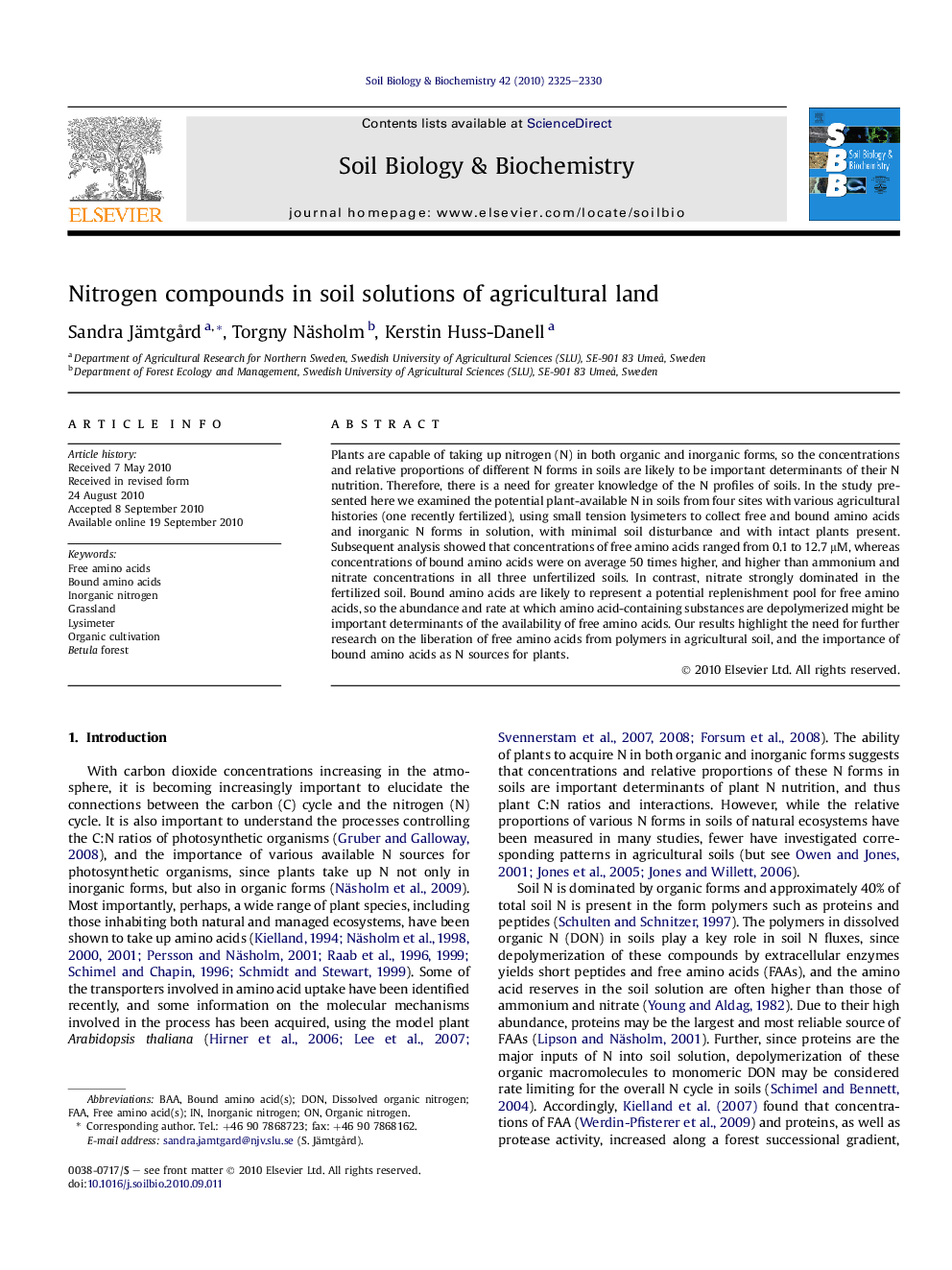| Article ID | Journal | Published Year | Pages | File Type |
|---|---|---|---|---|
| 2025387 | Soil Biology and Biochemistry | 2010 | 6 Pages |
Plants are capable of taking up nitrogen (N) in both organic and inorganic forms, so the concentrations and relative proportions of different N forms in soils are likely to be important determinants of their N nutrition. Therefore, there is a need for greater knowledge of the N profiles of soils. In the study presented here we examined the potential plant-available N in soils from four sites with various agricultural histories (one recently fertilized), using small tension lysimeters to collect free and bound amino acids and inorganic N forms in solution, with minimal soil disturbance and with intact plants present. Subsequent analysis showed that concentrations of free amino acids ranged from 0.1 to 12.7 μM, whereas concentrations of bound amino acids were on average 50 times higher, and higher than ammonium and nitrate concentrations in all three unfertilized soils. In contrast, nitrate strongly dominated in the fertilized soil. Bound amino acids are likely to represent a potential replenishment pool for free amino acids, so the abundance and rate at which amino acid-containing substances are depolymerized might be important determinants of the availability of free amino acids. Our results highlight the need for further research on the liberation of free amino acids from polymers in agricultural soil, and the importance of bound amino acids as N sources for plants.
Research highlights► Nitrogen compounds were analyzed in soil solution collected from the root zone in undisturbed soil. ► Bound amino acids concentrations were higher than inorganic nitrogen in soils solution of all unfertilized soils. ► Nitrate strongly dominated in soil solution from fertilized soil.
